The idea of prepping meals—spending a few hours once a week to get everything set for several day’s worth of food—may seem daunting, but like with running, you have to put in the work upfront to reap the rewards down the road.
“In our busy household, my mantra is always, ‘cook once, eat twice,’” Elyse Kopecky, co-author of Run Fast. Eat Slow. and Run Fast. Cook Fast. Eat Slow., tells Runner’s World.
Meal prepping, Kopecky says, will ultimately save you time, money, and mental stress. Who doesn’t want that? Kopecky, who hosts a virtual cooking class, is all about using runner staples across multiple meals. For example, she’ll cook up a large batch of her signature pulled chicken to use for tacos, in power bowls (grains, protein, and veggies), and on salads.
And while meal prep requires paying more money on groceries upfront, over the long run, you’ll stretch those ingredients for weeks, making it a budget-friendly decision, Jerlyn Jones, R.D.N., L.D., a spokesperson for the Academy of Nutrition and Dietetics, tells Runner’s World.
→ No matter what you want to improve in your running life, find it with Runner’s World+!
Why Runners Should Meal Prep
Runners plan out their training, and nutrition is part of that, so it makes sense to put thought into proper fueling and refueling. And because training takes physical and mental tolls on the body, decreasing stress with meal prep is a win-win.
“Meal prep helps reduce the mental load around putting meals together,” says Heather Caplan, R.D., L.D.N., a runner and Colorado-based registered dietitian.
And when it comes to overall health, Caplan says that preparing meals and snacks in advance forces you to shop and cook with intention—choosing foods that will power your runs and recovery.
Jones points out that without thinking about meals, you might be more likely to order takeout more frequently, where you might be drawn to foods higher in sugar or less-good-for-you fat, like in fried foods. Plus, she says, takeout and dining out get expensive.
“Meal planning helps you decide what you’re going to eat in the future, and you’re not, at the last minute, trying to figure out what to make or going out and spending funds you didn’t account for,” Jones says.
How to Meal Prep on a Budget
The key to preparing meals, regardless of whether you’re on a budget, is buying in bulk. Bulk ingredients make it possible to make multiple meals at once. Bulk ingredients are also cheaper per unit than buying individually, even though you’re paying more upfront.
For example, a seven-pound family-size pack of chicken breast costs roughly $15.40, or $2.29 per pound. Compare that with $6.89 for just one pound of chicken breast. Even if you’re not feeding a family, you can freeze extra chicken to stretch those dollars. And often, you can find sales and coupons for your go-to items, Briana Butler, R.D.N., L.D., tells Runner’s World.
When buying in bulk, with the goal of preparing multiple meals and saving money, it’s also a good idea to think about shelf-stable products, Jones says, like rice, beans, and peanut butter.
“If you buy shelf-stable items, they’ll last a whole lot longer than if you order takeout, which will last just a meal or two,” Jones says.
A bag of rice, for example, could serve as a complex carbohydrate—crucial for training and recovery—over five meals, Caplan says. A can of soup, while non-perishable, will only last a meal. That said, another good way to stretch your ingredients and meals, she says, is to combine foods.
“Think about things that work for more than one meal or things that combine well, like adding rice or frozen vegetables to a soup,” Caplan says.
Jones emphasizes the importance of being creative with meal planning, too. After all, variety is the spice of life. “This is where recipes come into play,” Jones says. “Find different ways to make the bulk chicken you bought—put it in soup, salad, add to rice for a stir-fry, serve with a tortilla as a burrito.”
She also recommends using different spices when preparing that chicken to allow for different flavors like Indian- or Caribbean-inspired dishes. “One package of chicken can turn into different cuisine based on the seasoning and other foods you cook with it,” Jones says.
And, you don’t have to buy organic to eat healthy, Butler adds. “You can still reap the benefits of whole foods even if they are not organic, so don’t let the label—or lack thereof—keep you from nourishing your body,” she says.
The Best Cheap Ingredients for Meal Prep
When choosing ingredients for meal prep, consider how those ingredients will fuel your runs and recovery, Caplan says. She goes on to say that for the average runner, having enough food is of utmost importance, and meal prep is a good way to ensure fuel is always on hand.
→ Grains
Grains, including white or brown rice, whole-wheat pasta, farro, and quinoa, are shelf-stable, inexpensive, and versatile. They’re also the best source of simple or complex carbohydrates that runners need to fuel their muscles.
Bagged grains are significantly cheaper than instant grains—rice or quinoa, for example—and they last longer, too. For example, a 16-ounce bag of brown rice costs roughly $1, or $.07 per ounce.
Whether your go-to grain is rice or pasta, make a box or two, to last the week. Top with different proteins, like chicken, canned tuna, or salmon, and mix with veggies for well-rounded meals that won’t get boring. Not sure what to have for a quick, healthy breakfast? Top your rice with a fried egg.
→ Frozen or Canned Produce
Dietitians everywhere want you to know that frozen or canned fruits and vegetables are just as nutritious as fresh produce—if not more! Not only are frozen and canned produce cheaper than the fresh stuff, for people who live in food deserts—areas without easy access to large grocery stores—frozen or canned produce might be all that’s available, Caplan says. A bag of frozen veggies can cost as little as $0.89.
Sure, you can eat your fruits or veggies on the side of whatever your main meal is, or you can mix veggies into a stir-fry or frittata (see below). But avoid frozen veggies that come with a sauce, Jones says. Those tend to be much higher in sodium and added sugar.
Use frozen or canned fruit in a smoothie or mixed in with oatmeal—another cheap, shelf-stable, runner-friendly grain. A bag of frozen fruit can cost as little as $2.00.
This content is imported from embed-name. You may be able to find the same content in another format, or you may be able to find more information, at their web site.
→ Eggs
A dozen eggs cost just over a dollar (if they’re not organic or pasture-raised, which are significantly more expensive), making them an incredibly cheap source of high-quality protein, Jones says. Plus, they provide vitamin D and choline.
One of our favorite meal prep-friendly egg dishes is a veggie frittata: Sauté whatever veggies you have, and then mix in six to 12 eggs with cheese and milk, and bake at 400 degrees for about 25 minutes, until the eggs are cooked through. Frittatas store well in the fridge or freezer and can easily be reheated for meals throughout the week.
→ Peanut Butter
We’ve never met a runner who doesn’t like peanut butter (unless allergic). It’s a plant-based protein that provides heart-healthy fat, and it goes with just about everything. While not necessarily healthier than other nut butters like almond or cashew, peanut butter is significantly cheaper—as little as $3.00 per jar. (Choose brands that have just peanuts in the ingredients, and maybe a little sea salt.)
“Unless you’re allergic, peanut butter is a must-have for your pantry,” Jones says. Use it on toast, bananas, in stir-fry dishes (it’s lower in sugar than most sauces and beefs up the protein content), and even right off the spoon.
→ Beans
Similar to grains, like rice and pasta, beans—dry or canned—are cheap, provide quality plant-based protein, and can serve as a hearty base for a variety of meals. They’re shelf-stable, and thanks to their fiber content, a small serving can still be filling.
“Beans are an easy source of protein, carbohydrates, and fiber,” Caplan says. “They’re versatile: Use them in salads, burgers, burritos, and tacos. There are so many options and they’re really cheap.” A can of beans can cost as little as $0.55.
Think outside the, er, can, with a bean salad—easy to make with cheap ingredients that will last many lunches or dinners: Mix together black beans, garbanzo beans (chickpeas!), red kidney beans, onion, frozen peas, frozen corn, chopped bell pepper, chopped tomato, and chopped scallions. Toss with olive oil, salt and pepper, and season with your favorite spices.
This content is created and maintained by a third party, and imported onto this page to help users provide their email addresses. You may be able to find more information about this and similar content at piano.io




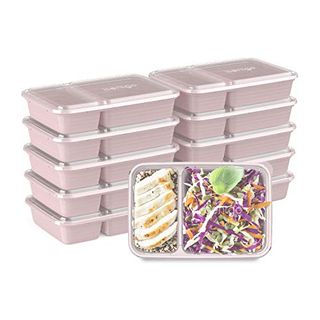
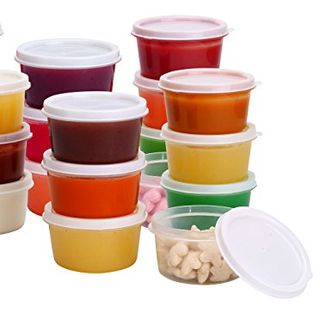
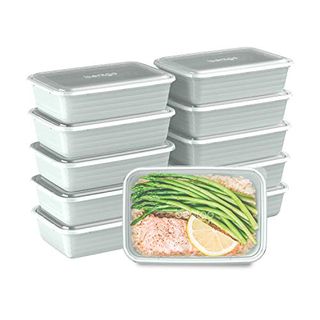
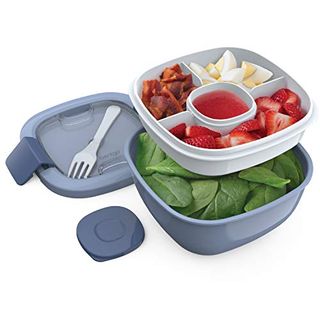
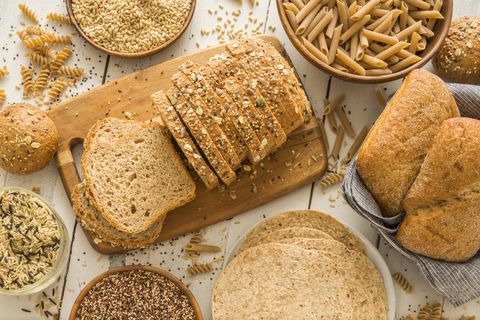
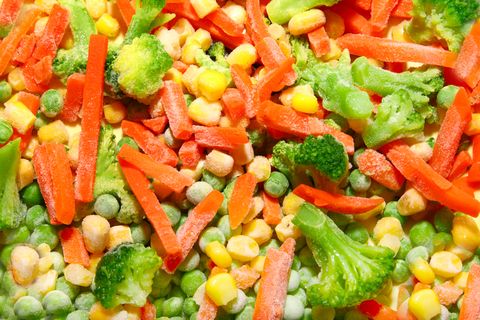


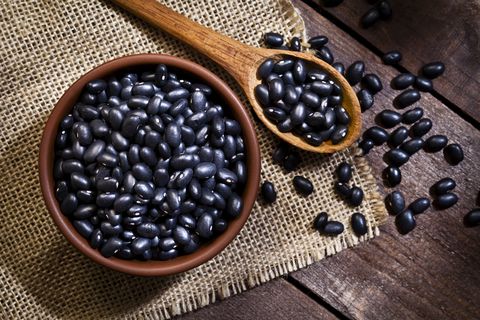
More Stories
The Health Benefits Of Chicken Curry Recipes
Guide To Deep Fryers
3 Unbelievable Peanut Butter Recipes For The Grill